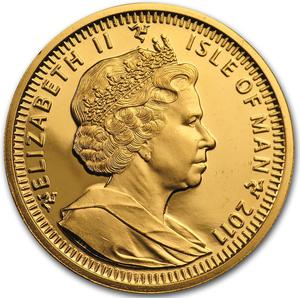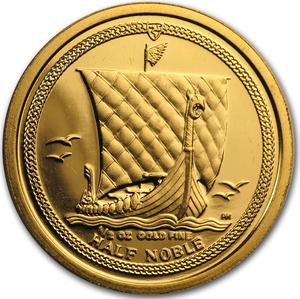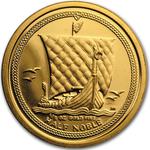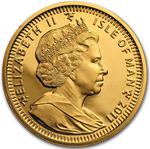The Isle of Man has its own circulating coinage, which is used in parallel with the British Pound Sterling; it also issues an extensive range of commemorative coins for collectors, as well as bullion coins in a variety of formats and designs for investors in precious metals.
One of the sizes used is the internationally popular one half of a troy ounce (1/2oz) of gold format.
The Noble was the name given to a coin introduced by King Edward III in 1344 and was one of the first widely-used Gold coins struck in England. It was believed at the time that the coin was a lucky charm as a protection against thieves. In 1994 The Isle of Man Issued the first gold Noble since the reign of Edward IV, with irregular issues thereafter.
The modern Noble has been issued in a number of formats and by different mints since 1983. Its strong viking theme relates to the history of the island, having once been the Kingdom of Man and conquered by Norse leaders, with the King of Dublin and the Earls of Orkney ruling the isle. The design also relates to the old English Noble, which featured a ship too.
It is usually said that modern Nobles are legal tender but without a fixed face value, like the Krugerrand or Mexico’s Libertad which are legal tender to the value of their precious metal content. However, according to the various Currency Determinations by The Treasury of the Isle of Man authorising each issue, the "Noble" denomination has a fixed value - for example, the 2010 Determination sets it as £10, while the 2017 and later acts make it equal to 5 pounds in face value, with fractions or multiples divided or multiplied as required by the fraction or multiplier shown on the reverse of the coin. Hence, the half ounce has a nominal face value of £2.50 (two and a half pounds). | 




 Search for Isle of Man: Gold Half Ounce 2011 Noble on eBay
Search for Isle of Man: Gold Half Ounce 2011 Noble on eBay 
